How to Eat Your Way Through Queens, New York
The borough I’ve called home for decades is brimming with fascinating food finds, from Georgian khachapuri to Nepalese momos to Mexican tortas.
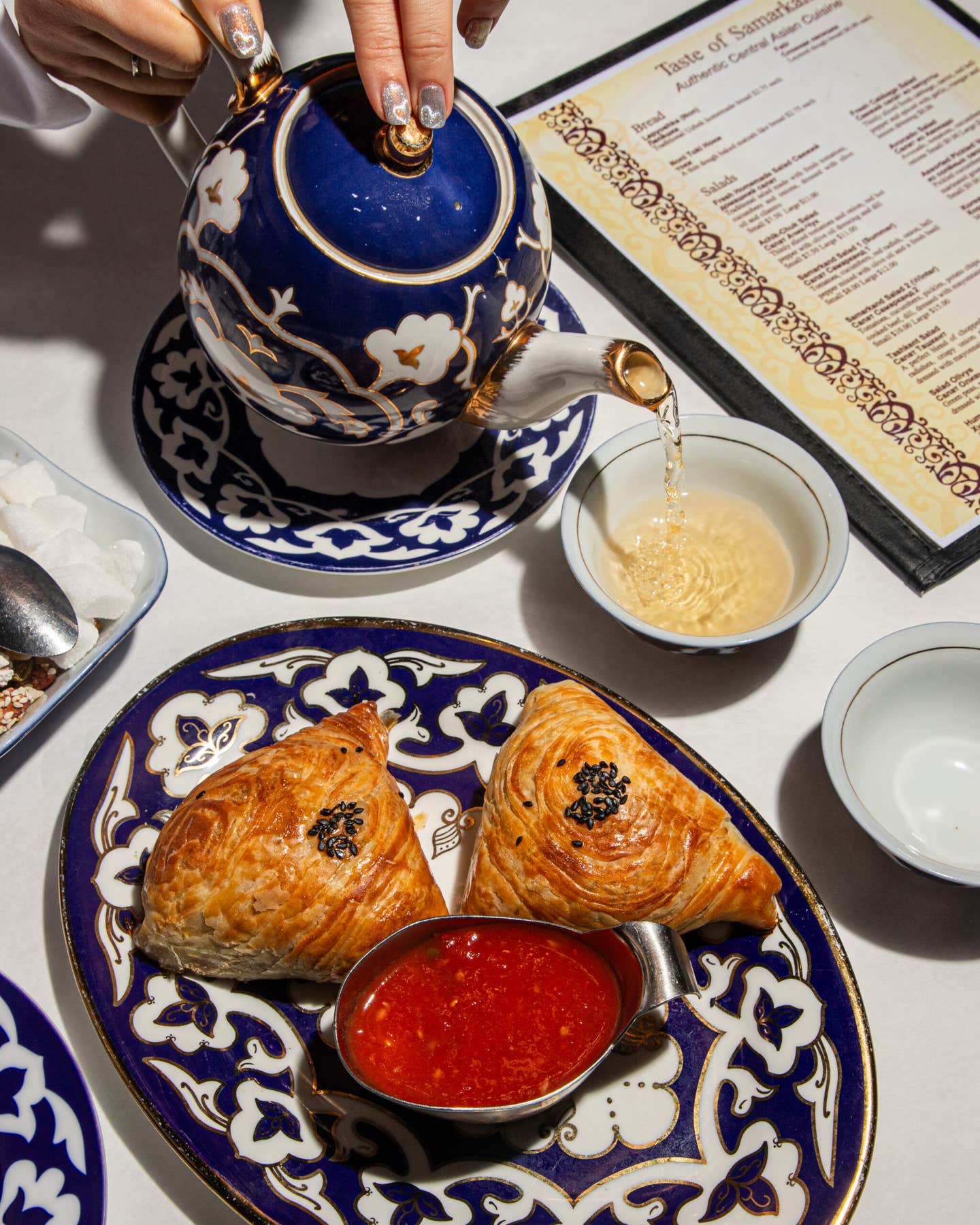
For most of my adult life I’ve lived in Queens, the largest of New York City’s five boroughs. Nicknamed “The World’s Borough,” with half of its 2.4 million residents being foreign-born, it’s one of America’s most diverse urban areas—and one of the most exciting places on the planet to eat.
In my neighborhood of Jackson Heights, more than 160 languages are spoken, from Bengali to Thakali to Mixtec. Here I might spot a saffron-robed monk eating a Burmese tea leaf salad by the subway stairs or stumble on a church bazaar selling Salvadoran pupusas.
As I worked on my cookbooks and National Dish, about cuisines and identities, food has always been my entry point into the polyglot social mosaic around me. In the part of Jackson Heights dubbed Little India, the air practically throbs with the scents of masalas from every South Asian region. To the west, along a vibrant pan-Latin thoroughfare under the elevated 7 train rumbling above, Quechua-speakers munch on chochos (lupini beans) and Colombian teens clutch plastic cups of Technicolor raspados (crushed ice). East of here is the Little Manila of Woodside. South lies Elmhurst, an ever-expanding Asia-zone with some of the most vibrant Thai food in the country.
A far larger Asia-town awaits in Flushing where I can try noodles from Guangzhou or Chengdu or Lanzhou. Beyond it: Murray Hill’s massive Koreatown. And did I mention the Egyptian seafood and Balkan bureks and Greek pastries cheek by jowl with hip cocktail spots in fast-gentrifying Astoria? Or the post-Soviet mosaic that is Rego Park, where golden khachapuri (Georgian cheese pies) preen next to Uzbek samsa next to Slavic pirozhki at bakeries? Or—whew, I’m getting winded now—the indie modern-American restaurants in Ridgewood and Long Island City? In Queens, you can have it all.
This borough of hyphenated cuisines and identities also challenges notions of what is “authentic.” Here Colombian yuca-dough empanadas might be made by Mexican ladies at a Chinese-run café chain, while a Latin cocktail place might double as a Moroccan hookah lounge. To eat here, as I have done for over three decades, is to develop an ever-deepening appreciation of food as a cultural force behind the vitality of our immigrant neighborhoods, a force that brings together communities even at a time when identity politics fracture the globe.
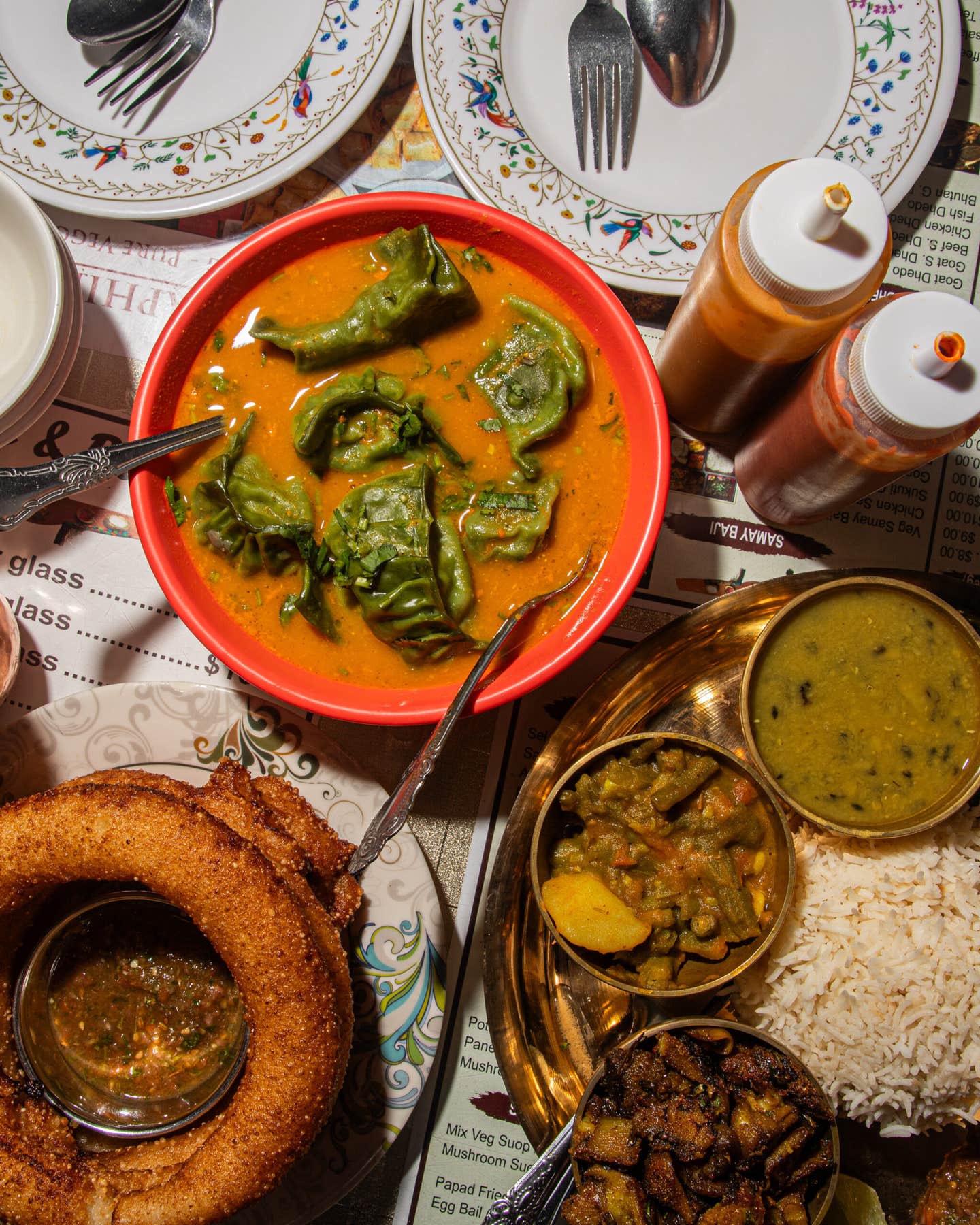
74-15 Roosevelt Ave.
(917) 745-0533
The area around the Roosevelt Avenue-Jackson Heights subway station is dubbed Himalayan Heights for the Nepalis and Tibetans who continue to settle here, hooking the multicultural hood on their austere, pleasingly rugged cuisines. A Himalayan Heights eating adventure can quickly turn into a lesson in Nepal’s many ethnicities (Sherpas, Thakkalis, and Mustangs, to name a few). And it will inevitably involve momos—the pleated dumplings that flourish hereabouts as something of an edible life force. For silky-skinned chicken or goat momos bobbing in jhol, a complex spicy broth pungent with Nepali masala, I love Bhancha Gar, winner multiple times of New York’s annual Momo Crawl competition. This homey spot also peddles crisp-golden sel roti (a skinny Nepali rice dough doughnut) served with spicy chutney for dipping. And yes, you’ll also want the sukuti, the chewy curried beef or goat jerky that Yamuna Shrestha, the petit, feisty co-owner, air-dries herself.
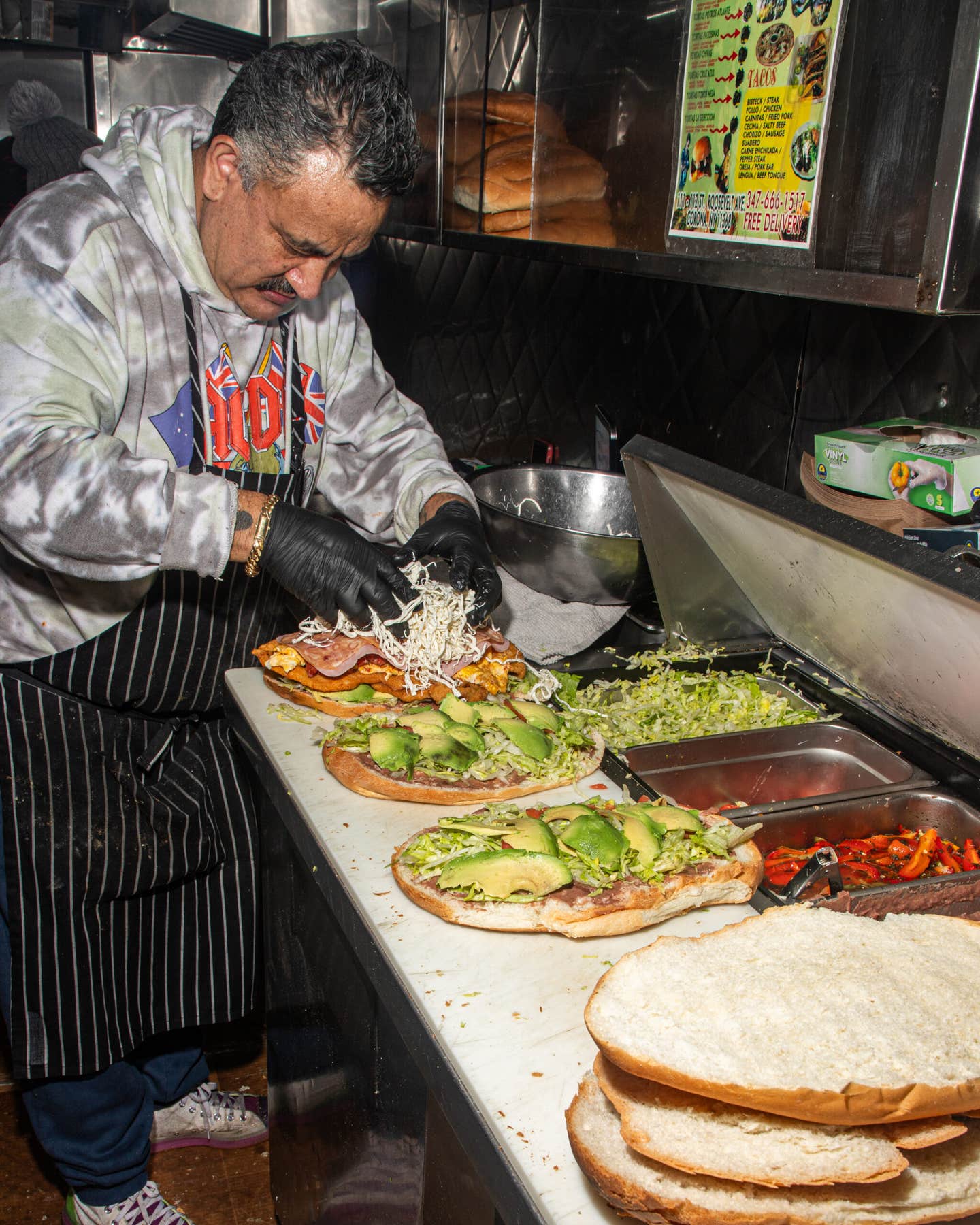
104-58 Roosevelt Ave.
(347) 666-1517
The stretch of Roosevelt Avenue from Jackson Heights east to Corona is the borough’s pan-Latin food corridor. Churros and chuzos, tamales and tacos, Colombian arepas and Ecuadorian mote (hominy) are hawked on its thronged sidewalks as cumbia, salsa, and ranchera blast from loudspeakers. Around 104th Street under the elevated 7 train tracks, you’ll find the blue Tortas Neza truck, where larger-than-life fútbol (soccer) fanatic Galdino Molinero constructs epic Mexican tortas (sandwiches) named after Mexico’s soccer teams. There’s always a wait, as Molinero crumbles chorizo, sizzles bacon, flips eggs on his griddle, and meticulously slices avocados for one of his 19 made-to-order creations. The result is worth the wait, especially when it’s a Torta Pumas (chorizo, ham, bacon, head cheese, veggies, breaded chicken, stringy quesillo, and pickled jalapeños), named for his soccer team. Customers receive this jaw-challenging tour-de-force with understandable awe.
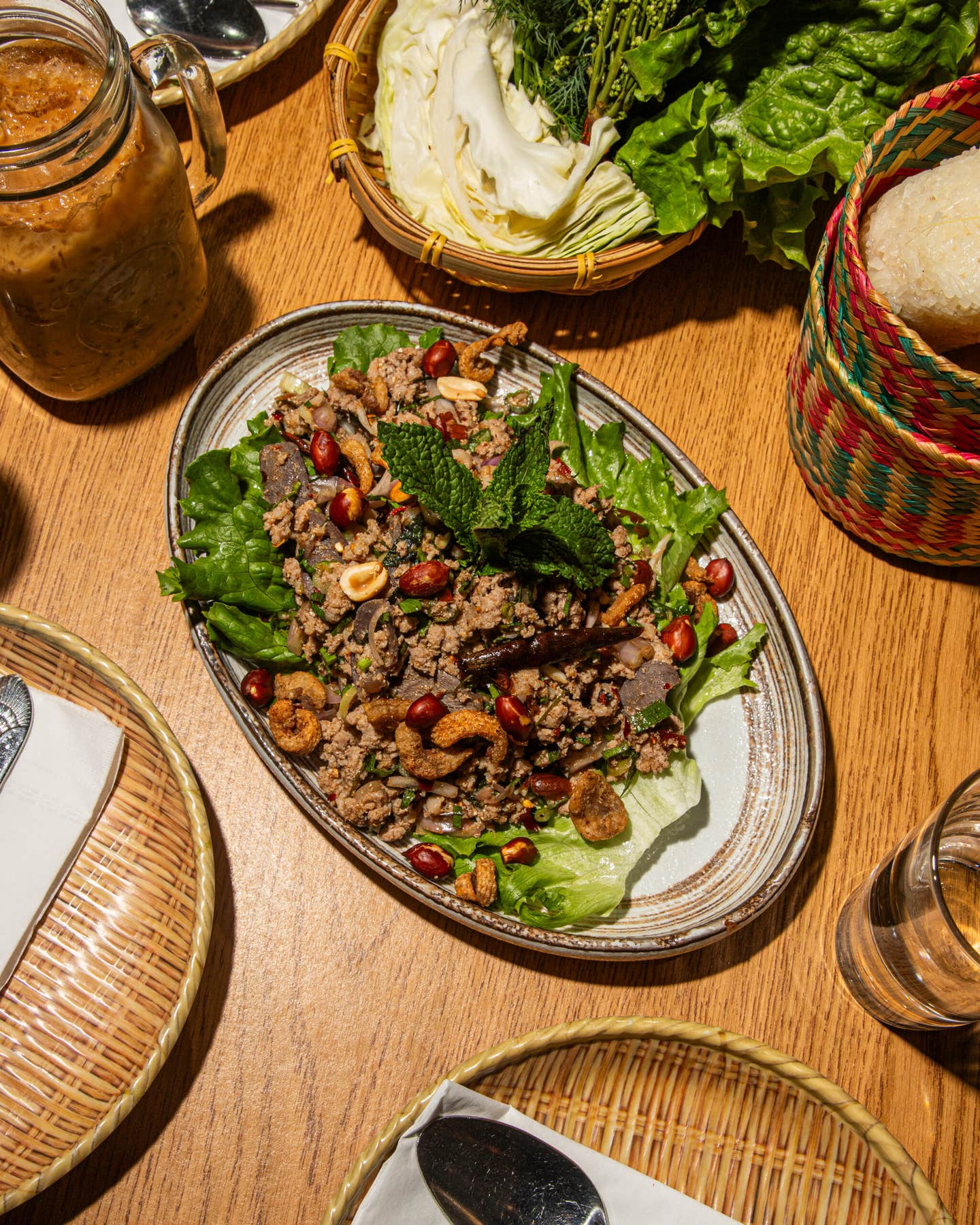
76-04 Woodside Ave.
(631) 526-1664
The three-block stretch of Elmhurst’s Woodside Avenue, officially named Little Thailand in 2022, is the place to experience intense Thai flavors undiluted for farangs (foreigners). For herbaceous, funky cuisine from the country’s northeastern Isaan region, head to Zaab Zaab, the city’s only Thai restaurant awarded three stars by the New York Times dining critic, Pete Wells. Owned by seasoned restaurateurs Bryan Chunton (from Bangkok) and Pei Wei (from Taiwan), this hip, cheerful space with ceiling paintings of roosters is your source for the now-famous duck larb, featuring minced duck meat, liver, and cracklings all shot through with charred galangal, makrut lime, and chiles. There’s also hor mok, catfish and sticky-rice-flour “pudding” inside a banana-leaf parcel, and a whole steamed branzino in an irresistible lime-garlic broth (you‘ll want some sticky rice to sponge that up). A newer star on the menu is the majestic gai yang vichean buri, a whole grilled baby chicken marinated for 24 hours in coriander, black and white pepper, and lemongrass—served family style with two fiery papaya salads.
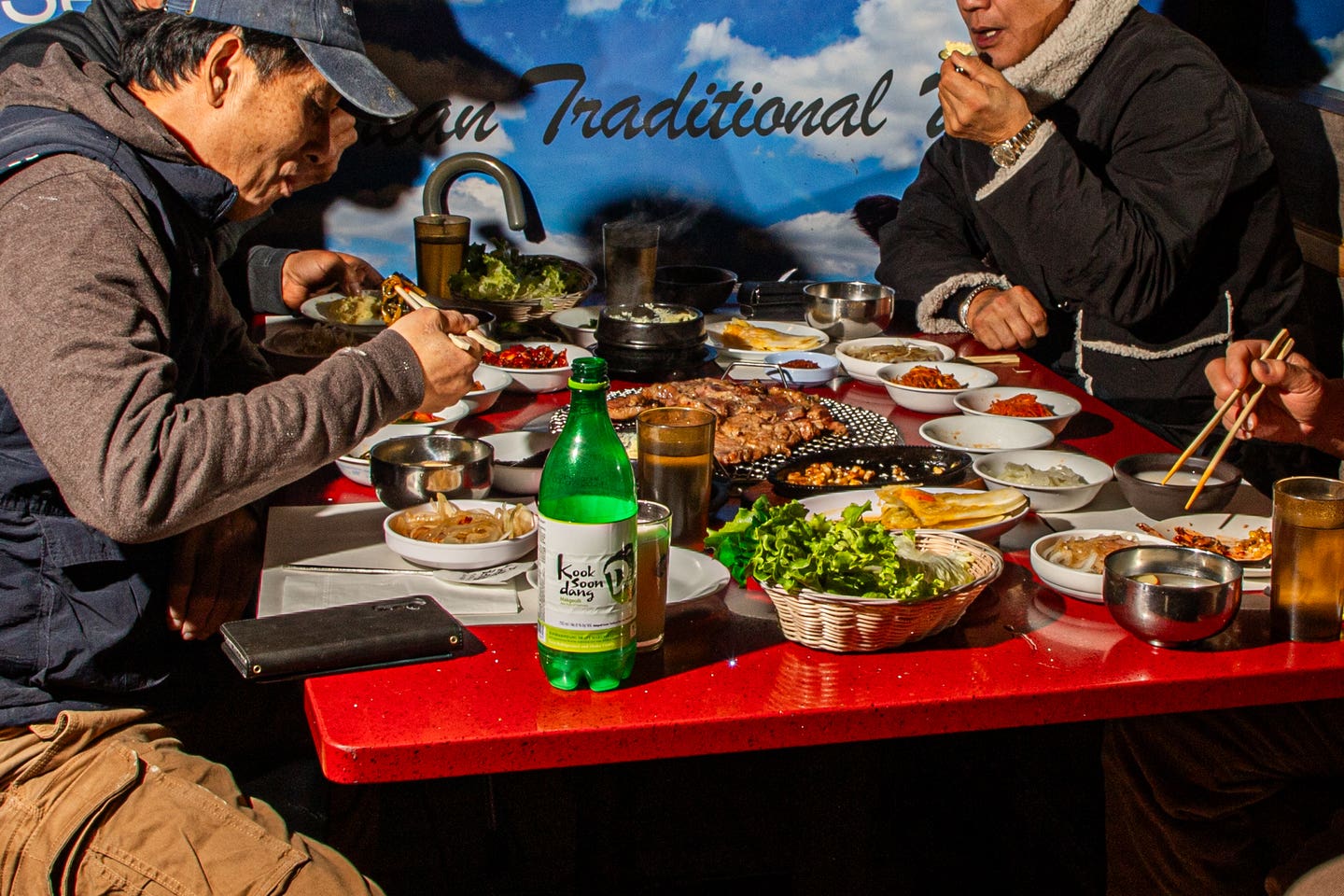
149-24 41st Ave.
(718) 886-8292
Home to over 60,000 Koreans, Flushing’s Koreatown stretches for miles and can truly feel like a suburb of Seoul with spas, herbalists, neon-lit karaoke joints, fried chicken spots, and pochas (Korean bars) where English is seldom spoken. Craving the borough’s best classic tabletop BBQ? Emerge from the Murray Hill LIRR into a cluster of eating establishments dubbed Meokjagolmok (“Let’s Eat Alley”) and head to the resolutely old-school Mapo BBQ. Beautifully marbled Black Angus kalbi (short ribs) are the draw here, marinated in soy and Asian pear pulp and grilled over real hardwood coal, which the maternal waitresses pile into your tabletop pit--returning often to make sure everything is cooking to its succulent prime. The servers readily replenish the generous spread of banchan including (natch) exemplary kimchi. And I’m still daydreaming about the sizzling cast iron side of corn cheese that comes with the kalbi.
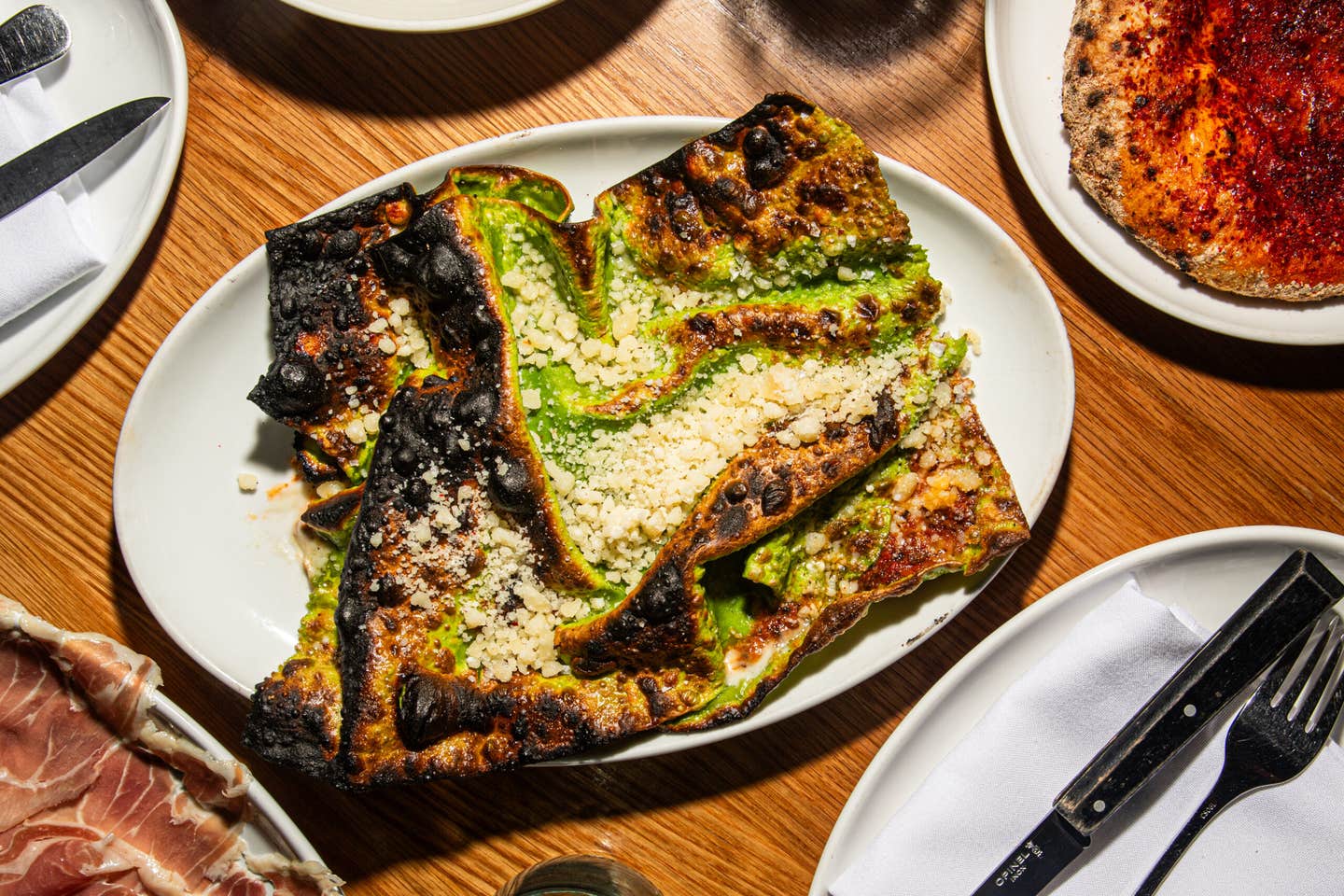
853 Onderdonk Ave.
(718) 417-6567
Ridgewood, the formerly working-class neighborhood bordering Brooklyn, began attracting attention a few years ago as young New Yorkers moved in looking for affordable housing. Sparking the neighborhood’s current restaurant boomlet was Rolo’s, a sprawling corner neighborhood place with a green awning, opened during the pandemic by four Gramercy Tavern alums. What started out as an all-day café and grocery has evolved into a quietly ambitious restaurant with warm cozy looks, a cool bar program (try the signature white negroni and tonic), a wine list rich in quirky affordable finds, and wood-fired cuisine pushing all the zeitgeisty buttons. Don’t miss the house-made mortadella and the giant flame-licked polenta flatbread with Calabrian chili butter. The kitchen, eclectic but leaning Italian, also does a marvelous two-sheet green lasagna blistered in that oven; zingy crudos (fluke with salsa macha, for instance) and succulent dry-aged house-butchered steaks. Desserts from pastry chef Kelly Mancin might include a dreamy passionfruit crème caramel.
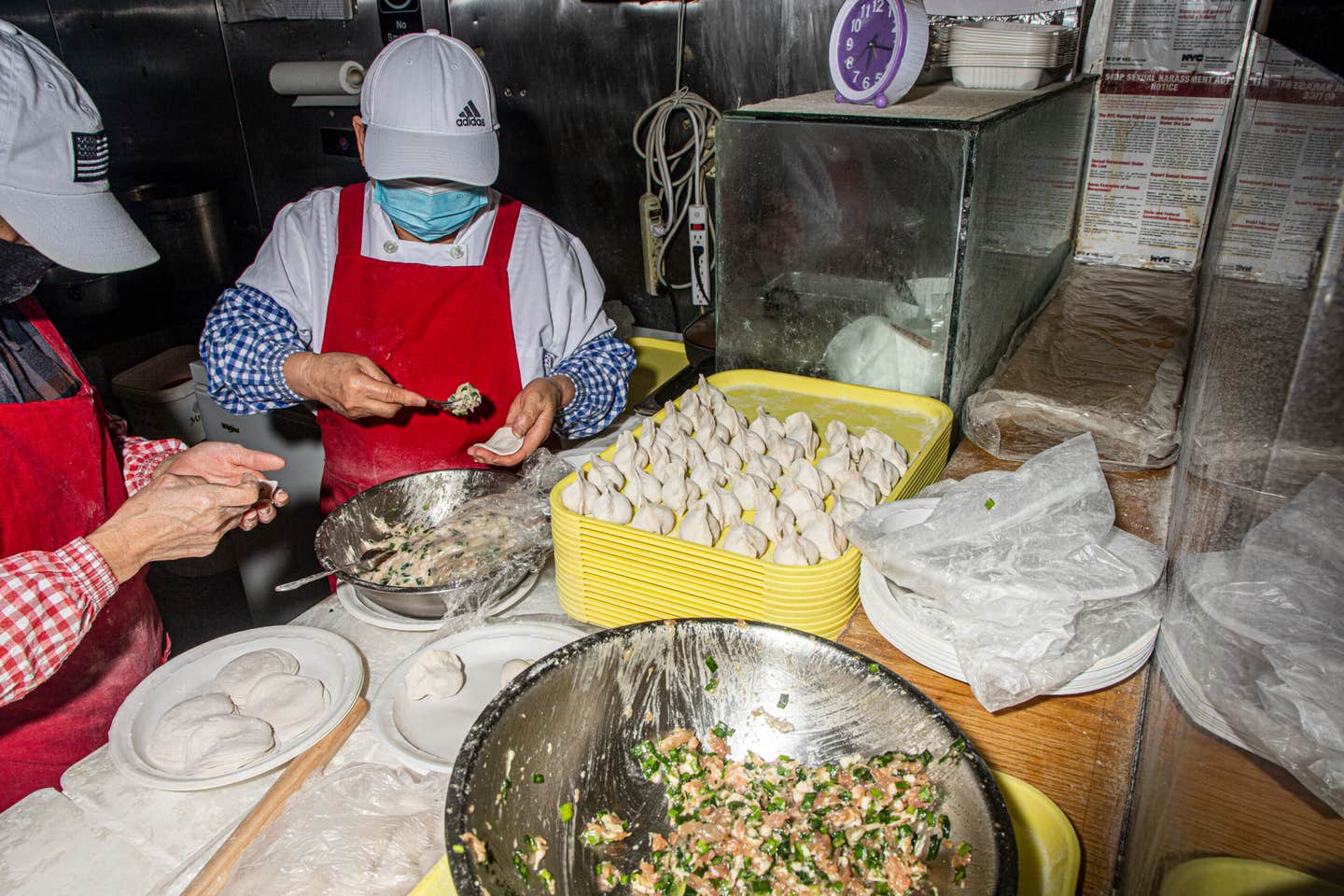
136-20 Roosevelt Ave.
(718) 353-0551
Flushing, the last stop on the 7 train, is New York’s real Chinatown, so thick with regional eateries it’s hard to choose between Sichuan hotpot, Cantonese dim sum, or lamb chops from Donbei. Luckily the food court of the brash, glitzy New World Mall has 32 vendors specializing in different dishes and styles. The place can be a bit overwhelming, but definitely stop at stall #30 (Joon Hang Boon Sek) where unsmiling Korean-Chinese ladies from Shandong speed-pleat plump pork and chive dumplings. You’ll also want some lamb-filled samsa pastries from #5 (Tarim Uyghur Food), while # 28 (Xi’an Cuisine) is your source for flaky “Chinese burgers” and slippery cold liang pi (aka skin noodles) from China’s Northwest Shaanxi province. And don’t neglect the beef brisket soup at #15 (Lan Zhou Noodles) where nimble cooks flip and pull dough for the freshly made noodles. Still hungry? Consider a spicy Sichuan dry pot at #24 (Tian Fu Cuisine), and to finish, a Taiwanese sweet mung bean soup or intriguing herbal jelly concoction from #10 (3 Dessert).
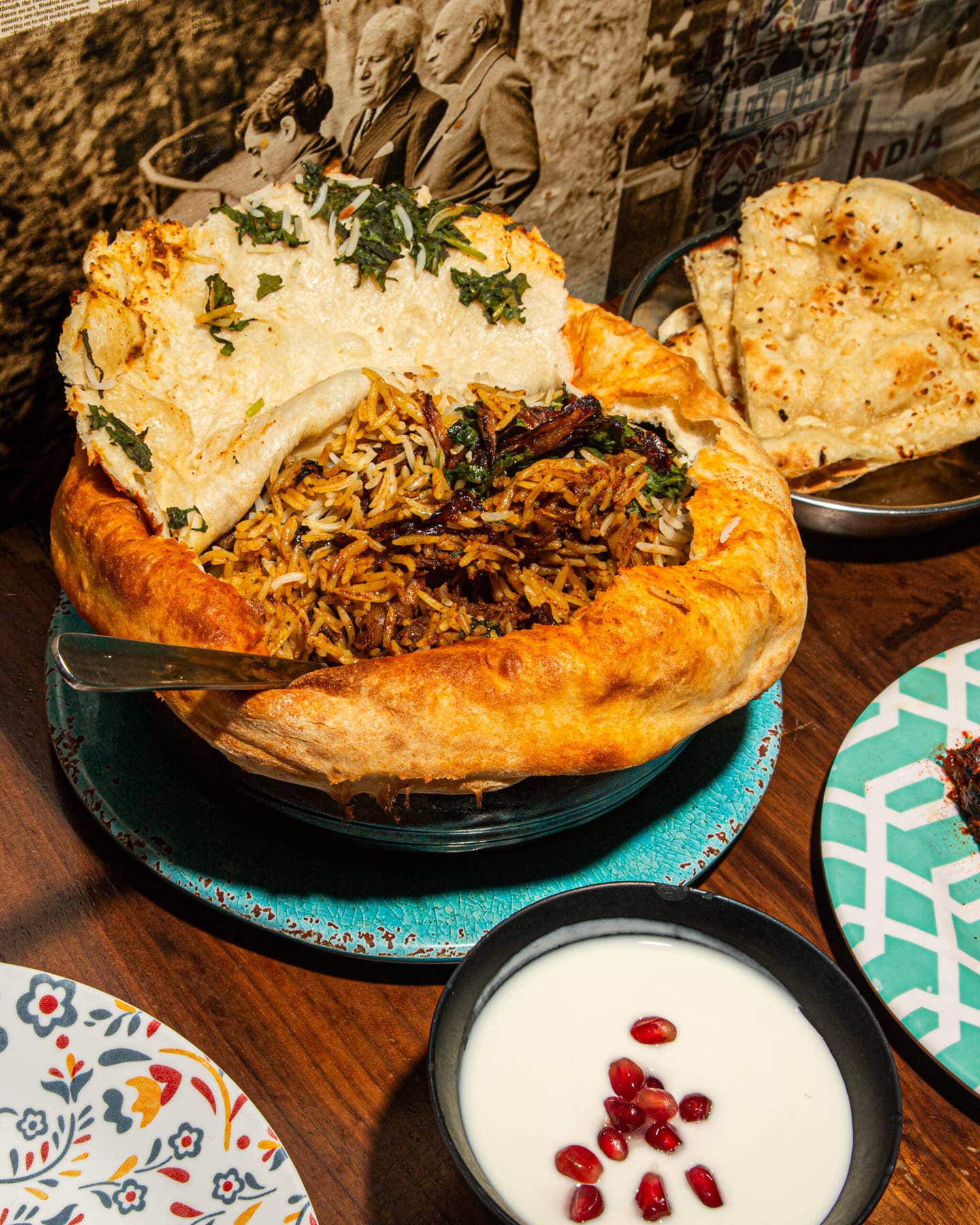
31-31 Thomson Ave.
(718) 433-3888
Each new restaurant from Unapologetic Foods, the group behind Dhamaka and Semma, is a sensation, including their latest hit, Filipino-flavored Naks. Amid all the hype one can forget that Adda Canteen, opened in 2018 on a cinematically forlorn stretch of Long Island City, was the place that propelled chef Chintan Pandya and restaurateur Roni Mazumdar to fame—and made goat brains the talk of New York. The unapologetically bold Desi regional cooking is still uncompromising at Adda, and the space decorated with collages of Indian newspapers still feels both edgy and cozy. The kitchen continues to send out playful Indian street snacks like the pakoda of kale served with sweet-tangy chutneys; smoky tandoori hits (grab the pompano crusted with mustard seeds); and multilayered curries so fiery you’ll be gulping mango lassis to extinguish the heat. The signature Lucknow-style dum biryani is quite a show, with servers breaking the dough lid to stir up the steamed basmati rice loaded with curried goat and fried onions. As for the plush house-made paneer used here in several dishes, it’s good enough to inspire whole cults. Ditto those goat brains.
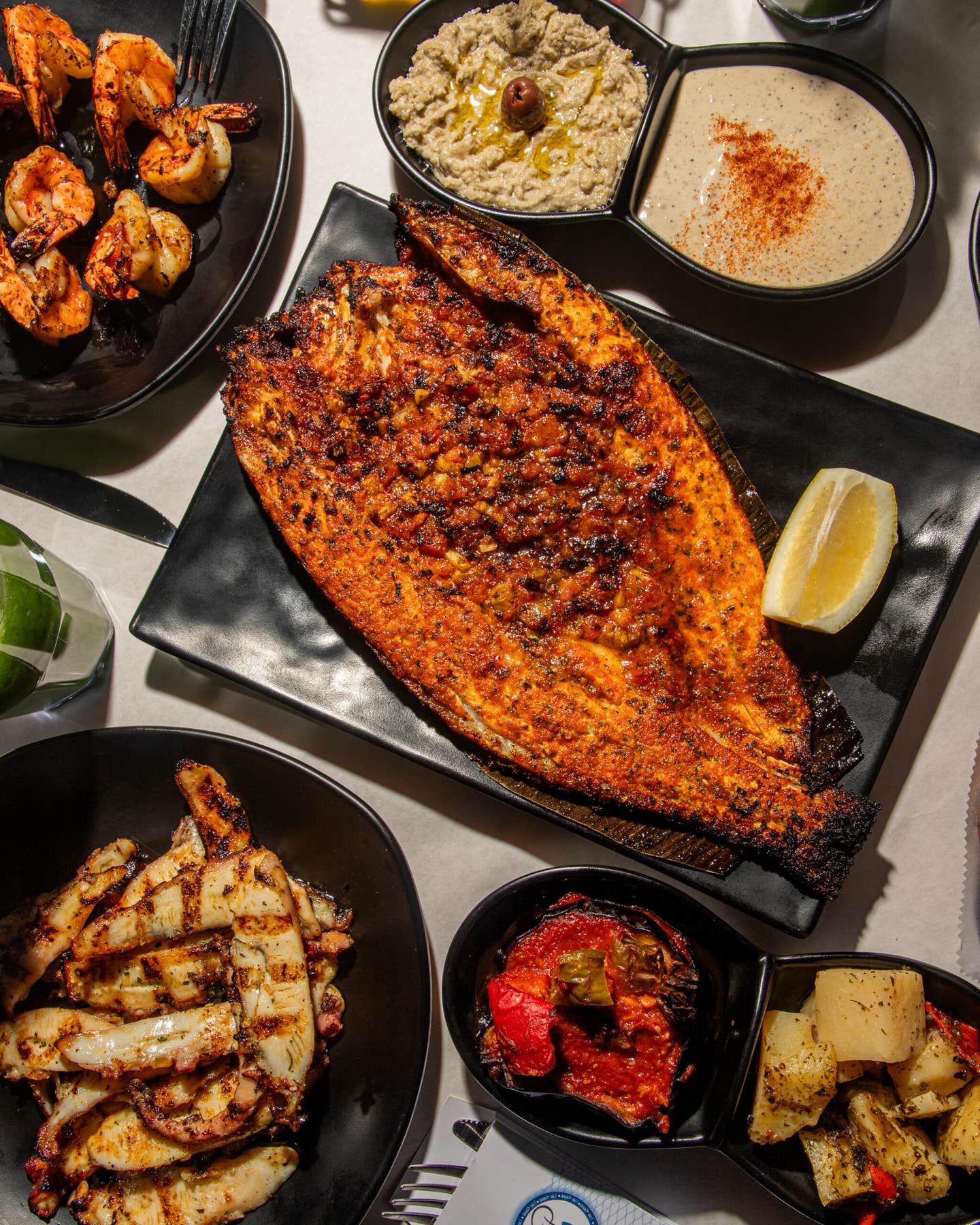
3308 Ditmars Blvd.
(718) 545-2200
The section of Astoria dubbed “Little Egypt” is known for its “you pick it, they cook it” seafood establishments whose displays let diners pluck their dinner from a mound of crushed ice. Usually run by Egyptians from the coastal city of Alexandria (folks who know fish), these restaurants include old-school stalwarts like Sabry’s, as well as more recent newcomers like Hamido Seafood, my favorite. This busy spot, decked out with nautical paraphernalia, was opened in 2019 by Alexandria-born restaurateur Moghared (Rudy) Mansy, and his cousin Mohamed Abuker, who cooks like a dream. After choosing from the gleaming-fresh catch on the counter—red snapper, whiting, porgy, shrimp, clams, lobster—you decide if you want it fried or griddled in a coating of bran; roasted with garlic and olive oil; or oven-baked sengari-style, (butterflied and stuffed with tomatoes). While you wait at the table for your charred branzino or a daily special of tomatoey seafood tagine, select your side dishes--then listen to the server explain that Hamido is named after a ‘70s Egyptian comedy in which undercover cops pretended to be fishermen.
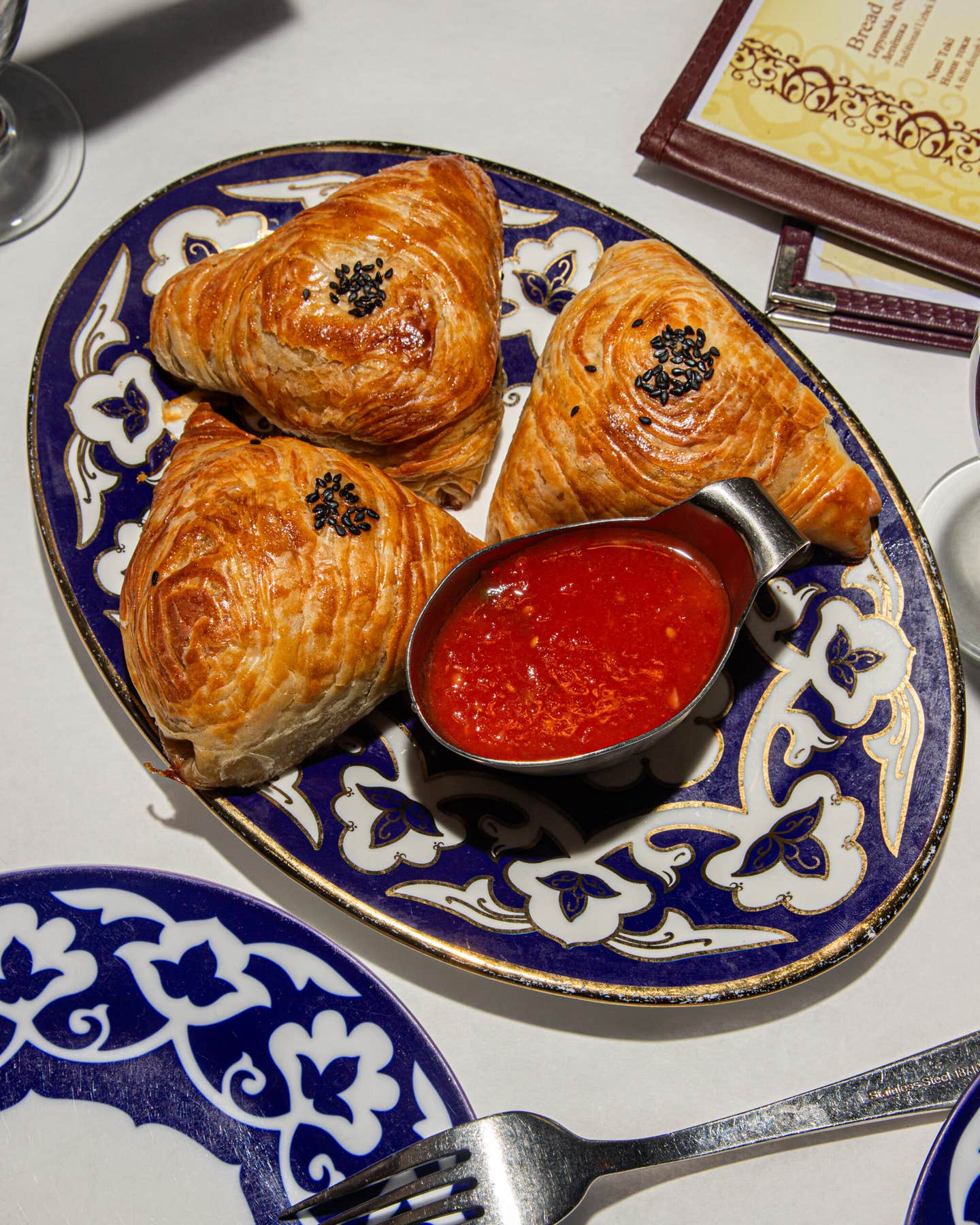
Taste of Samarkand
62-16 Woodhaven Blvd.
(718) 672-2121
After the Soviet Union went bust, Rego Park became the hub of a Central Asian (Bukharan) Jewish diaspora from Uzbekistan, with Muslim Uzbeks arriving more recently. The neighborhood’s Bukharan restaurants all have similar Silk Road fare: tandir-baked flatbreads and samsa (filled pasties); lagman soup loaded with hand-pulled Uyghur-style noodles; and pilafs and kebabs, plus a few Slavic dishes. On the neighborhood’s southern edge, Taste of Samarkand, named for the famed Silk Road city, stands out with its precise cooking and traditional carved-wood decor. Make sure to order the fist-sized manti (dumplings) filled with hand-chopped lamb; the noni toki, a dramatically concave matzo-like bread; and the unusual nakhot garmack, nutty chickpeas braised forever with veal tails. The magnificent plov (pilaf) here comes spiced with Uzbek wild cumin, threaded with julienned carrots, and loaded with lamb chunks.
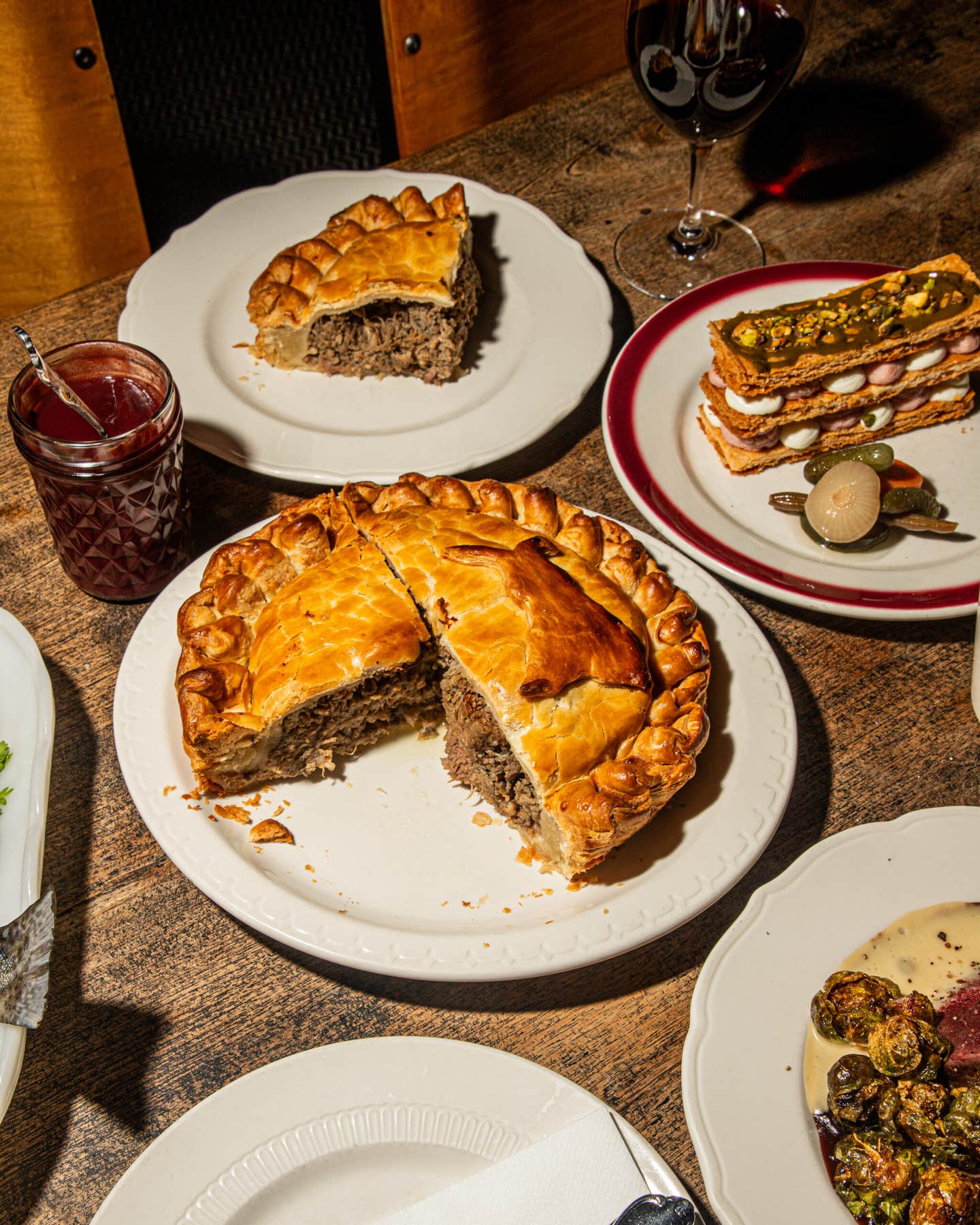
43-15 Crescent St.
(718) 786-9060
Over a decade ago, before the glossy residential skyscrapers of Long Island City came looming up all around, Canadian chef Hugue Dufour and his wife, Sarah Obraitis (a Queens girl), opened their quirky, loveable steakhouse in a former auto-body repair shop. With its glowing bar, open kitchen, cool cocktails and wines, deep pink walls, and silvery-leafy wallpapered ceiling softening the industrial look, M. Wells feels like a Brigadoon that’s delightfully stayed put. But its “tiny but mighty menu” Obraitis says, is always evolving, now leaning more soulful Québécois bistro than chophouse. Dufour’s playful approach shines in his mortadella mille-feuille and the much-feted wedge salad scattered with bacon and jagged red ketchup chips. In winter, go for the city’s cassoulet nonpareil, or a rosy venison loin, or the Montreal ravioli packed with smoked meat and punctuated with diced pickled green tomatoes. Summer might bring a bright crab-stuffed tomato with a dressing of purslane. Stoking the community spirit, M. Wells entices its neighbors with themed dinners, block parties, and screenings. And isn’t it heartening to see the place packed with real New Yorkers of all ages and walks of life, happy and laughing?
Keep Reading
Continue to Next Story










